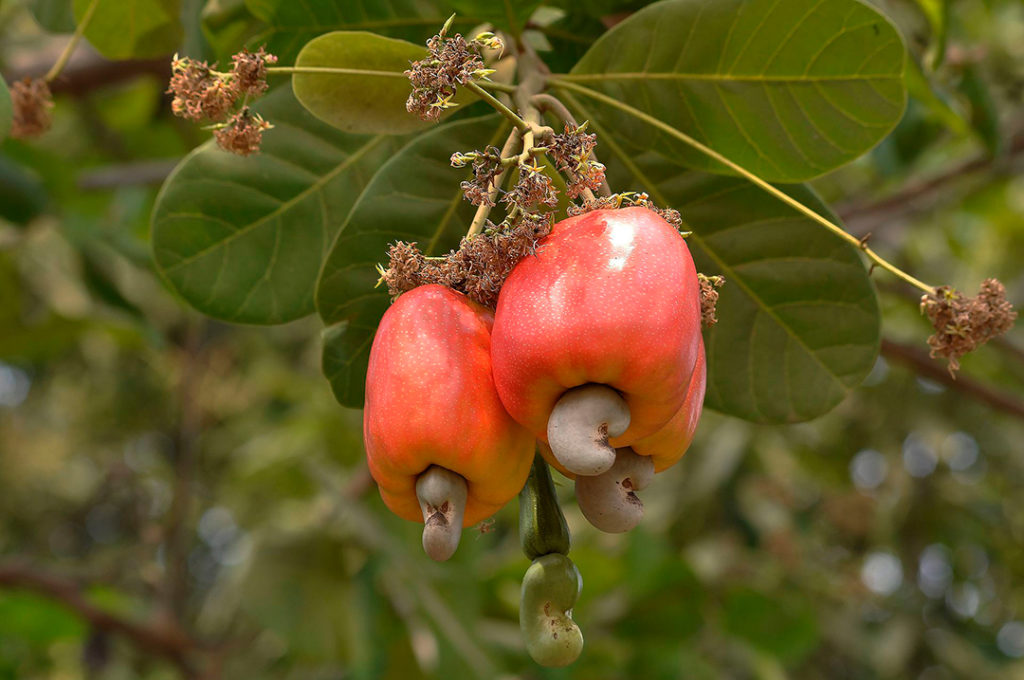
Guinea-Bissau
Cashew Tree
Anacardium occidental

General Description / Cultural Significance
The cashew tree, Anacardium occidental, grows all over the country Guinea-Bissau. The cashew, the edible nut of the tree, is one of their main exports. The tree grows fragrant clusters of flowers, and in the spring, it produces a fleshy fruit from which a beverage can be made and enjoyed. The beverage is naturally sweet and can be fermented. The tree also produces a milky gum used to make varnish. The cashew nut itself is eaten raw or cooked. It is pleasant and somewhat nondescript in flavor, and is often salted or used as an ingredient in dishes. The leaves are also used to treat malaria and chewed to treat toothache. The tannin present in leaf and stem extracts are found to be antimicrobial against malaria, though further research is needed to understand exactly how this works.
Climate Change/Conservation Status
The effects of climate change have been felt by the people in Guinea-Bissau, particularly with regards to their economy. They have experienced a gradual rise in temperature and decreased rainfall. This adverse weather is affecting cashew production and is undermining the country’s economic growth in one of the world’s poorest places, where the majority of the citizens live below the poverty line. Most people in Guinea-Bissau rely upon agriculture as their main source of income, and the irregularity of cashew as a reliable cash crop is devastating. This unreliability on good harvests contributes to their food instability, and in some regions of the country, up to half of the households are food insecure. The country has been generally set back by political instability, as there have been many unsuccessful coups since the 1970s, and this has hindered both growth and poverty aid. The fact that cashews are not processed in the country but are sold raw also doesn’t help them to make more money. Experts say that potentially to remedy this problem, the country will need to increase their rice production in order to export that instead.
In part because of the effects of climate change, the many small farmers of Guinea-Bissau that grow the cashew, Anacardium occidental, are vulnerable and can no longer depend on a stable production and income.
Alternate Names
Cashew nut
Sources
Aderiye B.I., David O.M., & Atere V.A., 2015. Administration of cashew extracts in the treatment of some infectious diseases,” Advancement in Medicinal Plant Research, [website] 3(3), pp. 75-86. ISSN: 2354-2152
Climate Change Adaptation, n.d. Guinea-Bissau. United Nations Development Programme. [website]
Mission of the Republic of Guinea-Bissau to the United Nations. This statement can be found on the World Sensorium original website.
Quinn, A., 2017. Why is Guinea-Bissau Poor? The Borgen Project. [website]
TNH, 2006. Guinea-Bissau: Diversification from cashew nuts essential. OCHA. [website]
WFP, n.d. Guinea-Bissau. World Food Programme. [website]

